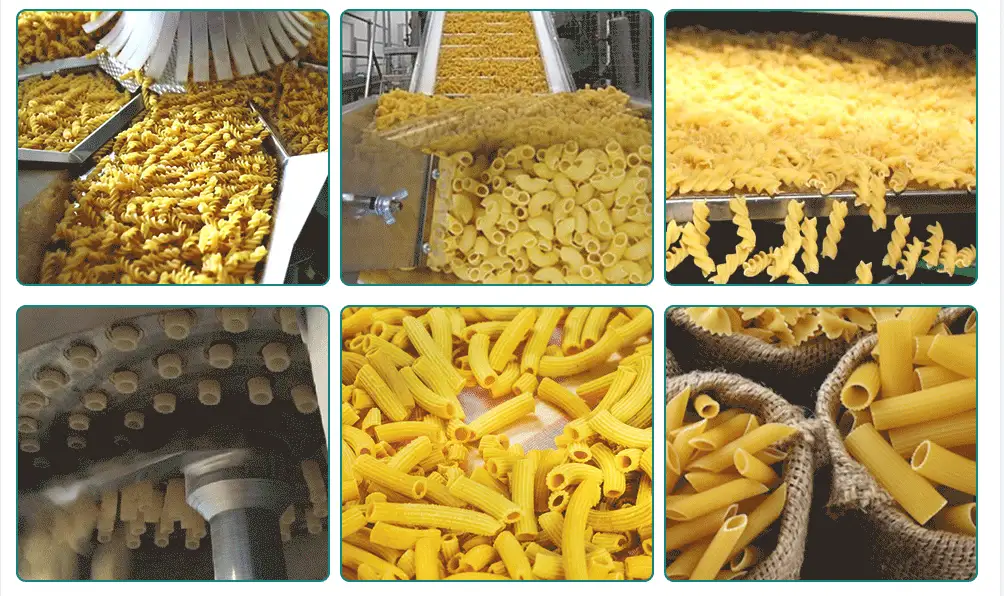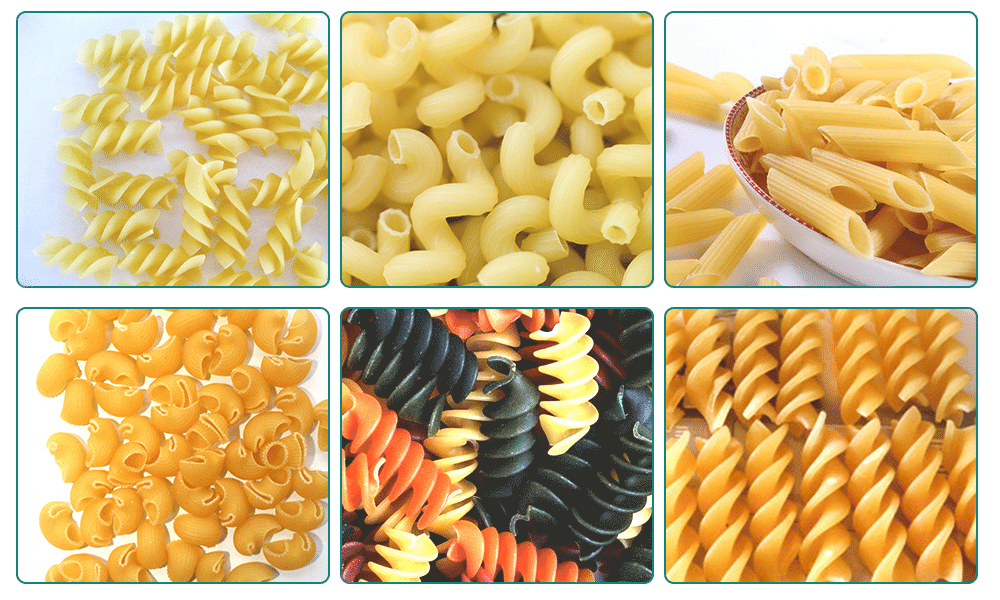When Was Macaroni Invented?
Pasta, in its myriad forms, has long been a cornerstone of global cuisine, offering a versatile canvas for culinary innovation and tradition alike. Among its many variants, macaroni stands out for its distinctive shape and texture, embodying the simplicity and richness of flavors that pasta brings to the table. The macaroni making machine, a pivotal invention in the pasta production process, represents a significant leap forward in culinary technology, enabling mass production while maintaining quality, thereby cementing macaroni's place in the hearts and diets of people around the world.
The significance of macaroni transcends its culinary applications, reflecting broader themes of innovation, culture, and globalization. As we delve into the origins of pasta, and specifically macaroni, we uncover a rich tapestry of history that stretches back centuries. The macaroni making machine not only revolutionized how pasta was made but also symbolized the blend of tradition and technological progress that characterizes the evolution of food preparation.
Culinary experts and historians alike point to the invention of the macaroni making machine as a turning point in the pasta industry. According to renowned chef and food historian, Massimo Bottura, "The development of pasta-making technology, particularly the invention of the macaroni making machine, marked a new era in gastronomy. It allowed pasta to transcend its humble beginnings, becoming a global symbol of Italian cuisine." This quote encapsulates the broader implications of the machine's invention, highlighting its role not just in pasta production but in shaping cultural and culinary narratives around the world.
As we embark on this exploration of macaroni's origins, its invention, and the pivotal role of the macaroni making machine, we will uncover the layers of history and innovation that have made macaroni a beloved staple in kitchens across the globe. This journey through time will not only illuminate the technical advancements in pasta production but also celebrate the enduring appeal of macaroni as a symbol of culinary creativity and cultural exchange.

The Origins of Pasta
The narrative of pasta is as complex and intertwined as the countless shapes and forms it takes across different cultures. To truly understand the inception of macaroni, one must first navigate the intricate history of pasta itself. Pasta's ancient roots are deeply embedded in the annals of human civilization, suggesting a food tradition that transcends geographical and cultural boundaries.
Contrary to popular belief, the journey of pasta did not begin with Marco Polo's legendary voyage from China to Italy. This oft-repeated myth has been debunked by food historians who have traced pasta's lineage far back into the Mediterranean's past, well before Polo's time. Indeed, pasta's origins can be found in the diverse culinary traditions of ancient civilizations, from the Greeks and Romans to the Arabs, each contributing their own innovations and techniques to the evolution of this versatile food.
Early references to a pasta-like food appear in several historical documents and artifacts, indicating that the foundations for pasta were laid long before it became synonymous with Italian cuisine. For instance, a Greek text from the 4th century BCE mentions "laganon," a layered dough dish that some scholars consider an early form of pasta. In Rome, "laganum" (a singular form of laganon) was a type of flatbread, hinting at the culinary experiments that would eventually lead to the pasta we know today.
The transition from these early iterations to the pasta that would become a staple of Italian cuisine was gradual, influenced by technological advancements, cultural exchanges, and agricultural developments. The Arabs played a particularly significant role in this evolution, introducing durum wheat and sophisticated drying techniques to the Mediterranean region. This contribution was crucial, as durum wheat's high gluten content and the ability to dry pasta for storage were instrumental in pasta's rise to prominence.
It is within this rich historical context that macaroni emerges as a distinct and beloved pasta variant. Macaroni, with its tubular shape and ability to hold sauces, represents not just a culinary evolution but a reflection of the human capacity for innovation and adaptation. The exact historical evidence pinpointing macaroni's first appearance is a matter of some debate among scholars, yet it is clear that by the Middle Ages, macaroni had begun to take its place at the European table, setting the stage for the revolutionary changes that the macaroni making machine would later bring.
The story of pasta, and particularly macaroni, is a testament to the dynamic interplay of cultures, technologies, and ideas that shape our culinary traditions. As we explore the invention of macaroni and the development of pasta-making technology, we continue to uncover the layers of history that contribute to our understanding of this global food phenomenon.
The Invention of Macaroni
The term macaroni encompasses more than just a pasta variant; it signifies a culinary innovation that has adapted and evolved through centuries, embodying the rich tapestry of food history. Defining macaroni is to describe its most recognizable characteristics: its tubular shape, varying in length and diameter, and its ability to complement a myriad of sauces and cooking styles. This versatility has allowed macaroni to transcend cultural and culinary boundaries, becoming a global favorite.
The earliest historical evidence of macaroni's appearance can be traced back to the Arab invasions of Sicily in the 9th century. The Arabs introduced durum wheat and various pasta-making techniques to the island, which became a pivotal point for pasta's development in Italy. Some food historians suggest that the word "macaroni" itself derives from the Arabic "maqaroon," meaning "pressed dough," indicating the method used to create this pasta form. This linguistic and culinary influence highlights the interconnectedness of different cultures in shaping what would become a staple of Italian cuisine.
As the popularity of pasta grew in the Middle Ages, particularly in Italy, macaroni began to distinguish itself as a favorite among the myriad pasta shapes. Historical documents from the 13th century make mention of macaroni in Italy, suggesting that by this time, it had become well-established within the Italian culinary landscape. The evolution of macaroni through the ages is marked by its adaptability and the creative ways in which it has been served, from simple butter and cheese preparations to elaborate sauces and bakes.
The Renaissance period saw macaroni gaining prominence among the upper classes in Italy, with elaborate dishes being served at banquets and feasts. This period of culinary innovation played a significant role in elevating macaroni's status, showcasing its versatility and appeal across different societal strata. By the 17th and 18th centuries, macaroni had become ingrained in Italian culture, with travelers to Italy noting its widespread popularity and distinctive preparation methods.
The industrial revolution of the 19th century marked the next significant evolution in macaroni's history with the advent of the macaroni making machine. This technological breakthrough transformed pasta production from a labor-intensive process to a more efficient, mechanized operation, making pasta more accessible to the masses. The machine's invention is attributed to Cesare Spadaccini, a Naples-based inventor, who developed a device that could extrude dough through dies to create various pasta shapes, including macaroni. This innovation not only increased production capabilities but also ensured consistent quality and shape, further solidifying macaroni's place in culinary traditions.
The evolution of macaroni reflects broader themes of innovation, globalization, and cultural exchange. From its early beginnings to the introduction of the macaroni making machine, each phase of its history underscores the dynamic relationship between tradition and technological advancement. As macaroni continues to adapt and thrive in modern cuisine, its story remains a compelling chapter in the broader narrative of food and culture.
The Role of the Macaroni Making Machine
The transition from handmade to machine-made pasta marks a pivotal moment in the history of culinary technology, with the macaroni making machine standing as a testament to human ingenuity and the pursuit of efficiency. This evolution transformed not just the production of macaroni but also its cultural and economic impact, democratizing what was once considered a luxury item and making it a staple food for people worldwide.
The development of the first macaroni making machine in the 19th century was a revolutionary step forward for the pasta industry. Before its invention, pasta making was an arduous, time-consuming process, largely confined to artisanal methods and small-scale production. The machine, through its ability to extrude dough into precise shapes and sizes, significantly sped up production times and allowed for the mass production of macaroni and other pasta varieties. This was a significant advancement, as it not only increased the availability of pasta but also ensured a consistent product quality that could be enjoyed by consumers everywhere.
Cesare Spadaccini's invention, mentioned earlier, was a groundbreaking moment in food manufacturing. By mechanizing the extrusion process, Spadaccini's machine could produce pasta at a pace and scale previously unattainable, heralding a new era in the food industry. The impact of this automation was profound, facilitating the spread of pasta consumption beyond Italy's borders and contributing to its global popularity.
The macaroni making machine also played a crucial role in the economic development of the pasta industry. By lowering production costs and improving efficiency, it enabled pasta manufacturers to expand their operations and reach a broader market. This economic shift not only fueled the growth of established pasta producers but also encouraged the emergence of new businesses, further diversifying the pasta market and fostering innovation within the industry.
Furthermore, the automation of pasta production had a notable impact on culinary practices. With macaroni and other pasta forms becoming more readily available, chefs and home cooks alike were inspired to experiment with new recipes and techniques, leading to the development of a rich array of pasta dishes that have become beloved classics. This era of culinary creativity was made possible by the accessibility and consistency of machine-made pasta, underscoring the significant role that the macaroni making machine played in shaping modern cuisine.
In reflecting on the historical significance of the macaroni making machine, it is clear that its influence extends far beyond the technical aspects of pasta production. It represents a moment of convergence between tradition and innovation, where the age-old art of pasta making met the industrial prowess of the modern age. The machine's development not only enhanced the efficiency and scope of pasta production but also contributed to the cultural and social fabric of societies around the world, making macaroni a global symbol of culinary delight and innovation.

Macaroni in Modern Cuisine
The journey of macaroni from its humble origins to a global culinary staple is a testament to its enduring appeal and versatility. In modern cuisine, macaroni has transcended its traditional Italian roots, weaving its way into the fabric of food cultures around the world. This universal embrace of macaroni reflects not only its culinary versatility but also the global journey of pasta as a whole, facilitated by innovations such as the macaroni making machine.
Today, macaroni is celebrated for its ability to adapt to a wide range of cooking styles, from the classic Italian Macaroni and Cheese to the inventive macaroni casseroles that have become a comfort food staple in many countries. Its tubular shape and firm texture make it the perfect vehicle for a variety of sauces and ingredients, allowing chefs and home cooks alike to experiment with flavors and techniques. This versatility has ensured that macaroni remains a favorite in kitchens across the globe, continually evolving with the culinary trends and preferences of the times.
The global journey of macaroni is a remarkable narrative of culinary exchange and adaptation. From Italian kitchens to the diverse culinary landscapes of Asia, the Americas, and beyond, macaroni has been embraced and integrated into local cuisines in unique and innovative ways. In Asia, for instance, macaroni is often used in soups and stir-fries, incorporating local flavors and ingredients to create dishes that are distinctly different from their Italian counterparts yet equally cherished.
The future of macaroni in modern cuisine is as promising as its past is rich. With a growing focus on sustainability, health, and global flavors, macaroni is well-positioned to adapt to these emerging trends. Innovations in pasta production, such as the use of alternative grains and legumes, open new possibilities for macaroni in terms of nutritional value and dietary inclusivity. Furthermore, the ongoing exploration of global cuisines continues to introduce macaroni to new generations and cultures, ensuring its place in the evolving narrative of global food traditions.
The lasting appeal of macaroni also speaks to its cultural significance. Beyond its role as a culinary ingredient, macaroni serves as a symbol of comfort, tradition, and innovation. It embodies the idea that food can bring people together, transcending cultural and linguistic barriers to share in the universal joy of cooking and eating. As macaroni continues to evolve, it remains a testament to the enduring power of food to connect, inspire, and innovate.
Conclusion
The story of macaroni is a captivating chapter in the vast narrative of global cuisine, illustrating the dynamic interplay between tradition and innovation. From its ancient roots to its modern-day incarnations, macaroni has traversed centuries and continents, evolving alongside changes in culinary technology, preferences, and cultural exchanges. The invention and widespread adoption of the macaroni making machine marked a pivotal moment in this journey, transforming pasta production from an artisan craft to a global industry and enabling macaroni to become a staple food for millions around the world.
The historical significance of macaroni extends beyond its culinary applications. It represents a broader story of human creativity, adaptability, and the drive for improvement. Through the lens of macaroni, we can explore themes of cultural identity, technological progress, and the unifying power of food. The macaroni making machine stands as a symbol of this progress, highlighting the ways in which innovation can foster cultural exchange and culinary evolution.
As we look to the future, macaroni continues to hold a cherished place in the hearts and kitchens of people across the globe. Its enduring popularity and cultural relevance are testaments to its versatility, appeal, and the lasting impact of the technological advancements that have shaped its history. Macaroni, in all its simplicity and complexity, remains a symbol of the ways in which food can bridge divides, inspire creativity, and enrich our lives.
In conclusion, the invention of macaroni and its subsequent evolution through the ages underscore the profound influence of culinary innovation on our cultural and social landscapes. The macaroni making machine, a key player in this story, not only revolutionized the pasta industry but also contributed to the global journey of macaroni from a regional specialty to a worldwide phenomenon. As macaroni continues to adapt to the tastes and trends of the future, its story remains a compelling reminder of the power of food to connect us to our past, to each other, and to the endless possibilities that lie ahead.












